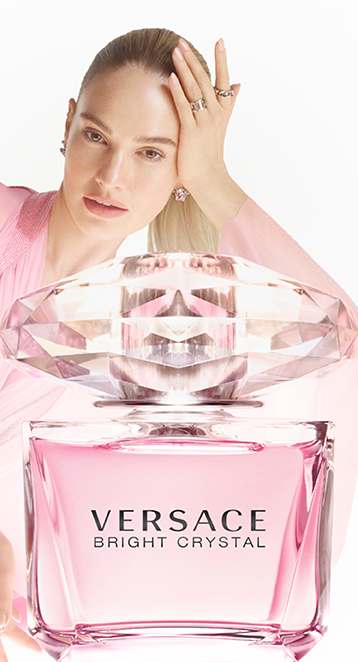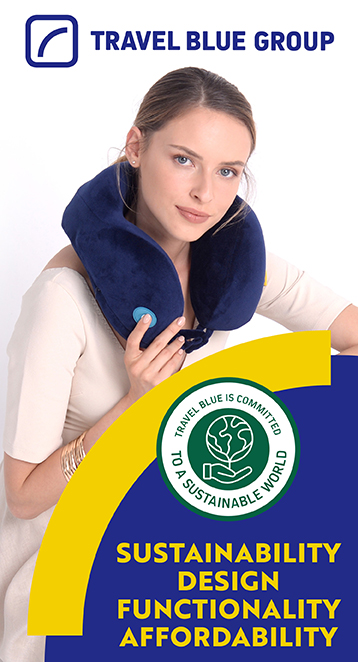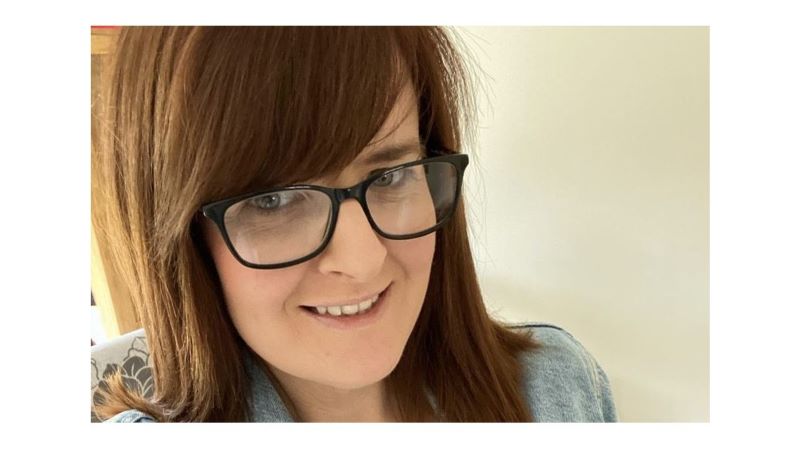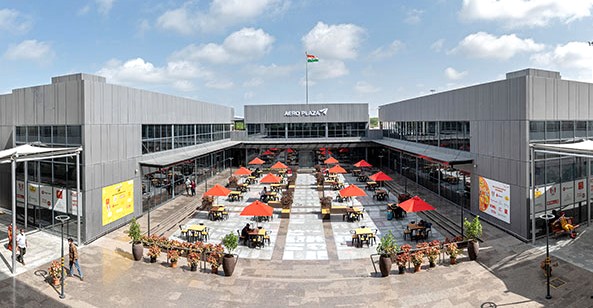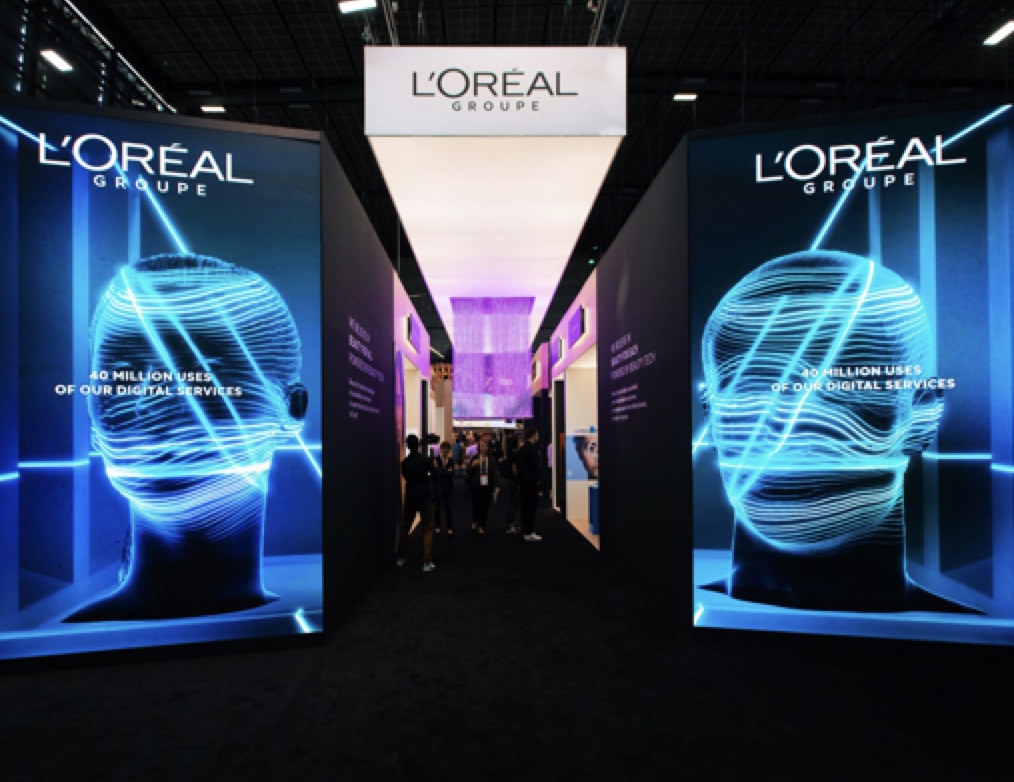
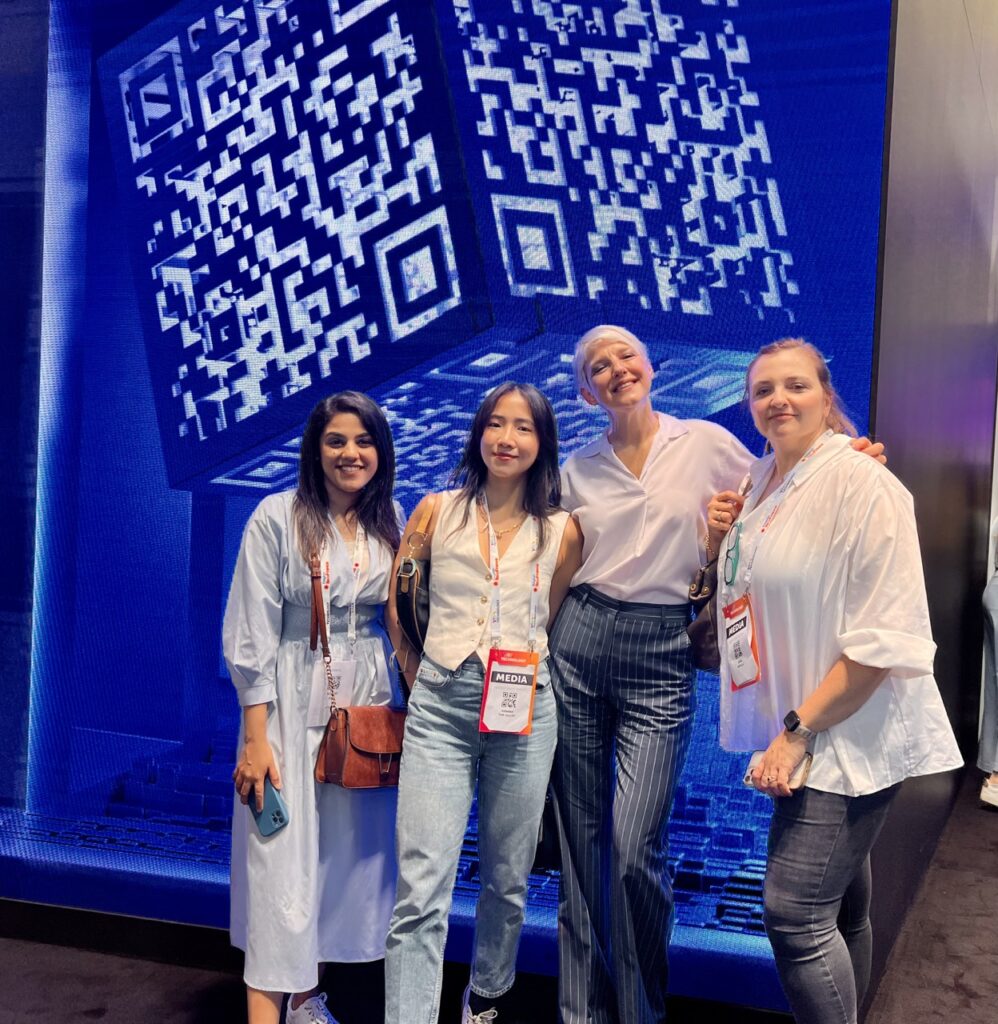
L’Oréal Groupe unveiled a host of beauty tech innovations at the annual Viva Technology exhibition in Paris (14-17 June).
During the event, the beauty house revealed its refreshed mission, ‘Beauty for all and beauty for each’, as it highlighted how beauty can work as a force for individual and collective good.
The Moodie Davitt Report Brands Director Hannah Tan-Gillies and Publisher Irene Revilla were on location for the Viva Technology exhibition to discover L’Oréal Groupe’s latest innovations, partnerships and get a behind-the-scenes look at its Research & Innovation Centre in Aulnay.
The Moodie Davitt Report also attended the 25th annual For Women in Science Awards (FWIS), an ongoing project between L’Oréal Groupe and UNESCO that puts women scientists on the spotlight (Full story coming soon).
L’Oréal Groupe occupied an expansive stand at Viva Technology, marking its seventh showing at the tech exhibition.
The interactive space demonstrated the beauty giant’s expertise at harnessing the power of tech, data and AI to offer consumers elevated beauty products and personalised services. The innovations featured included smart and sustainable beauty solutions, interactive digital services, data-powered diagnostic services and inclusive, personalised and virtual beauty.
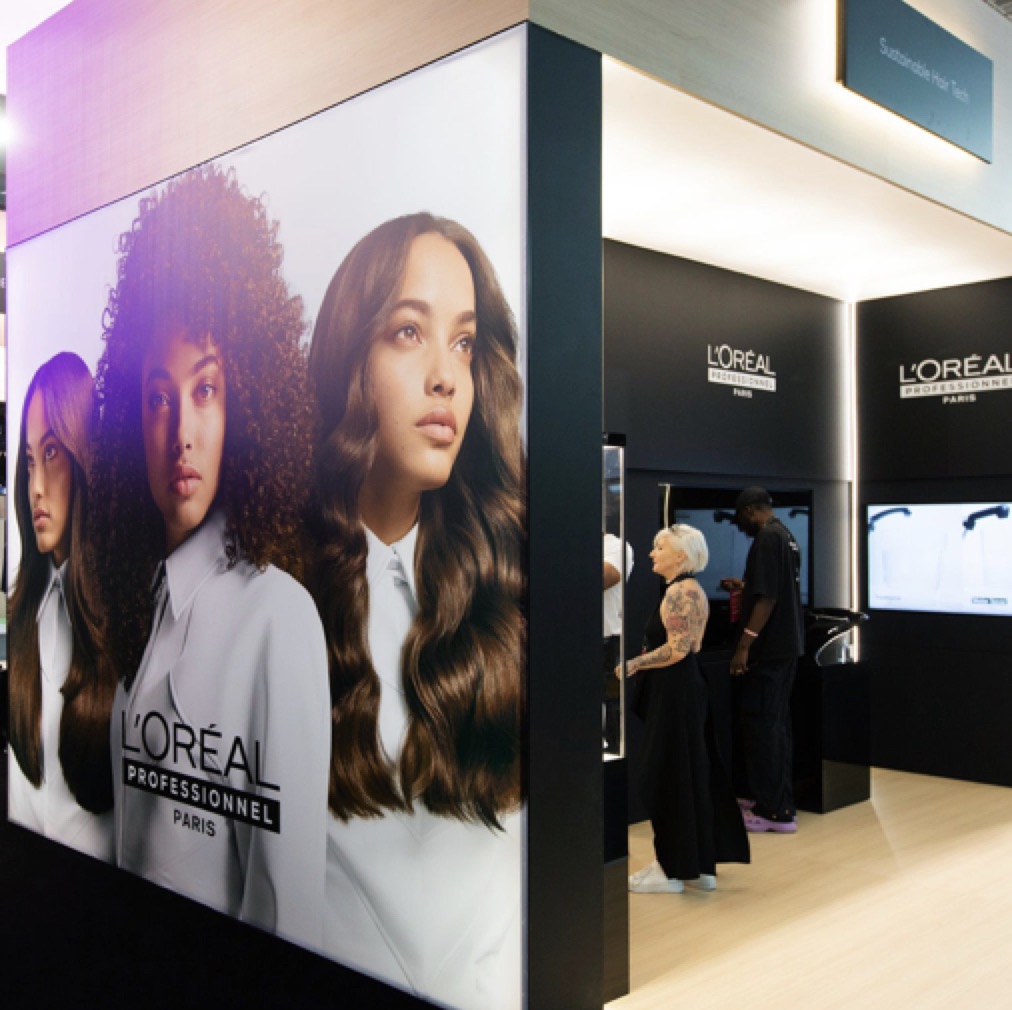
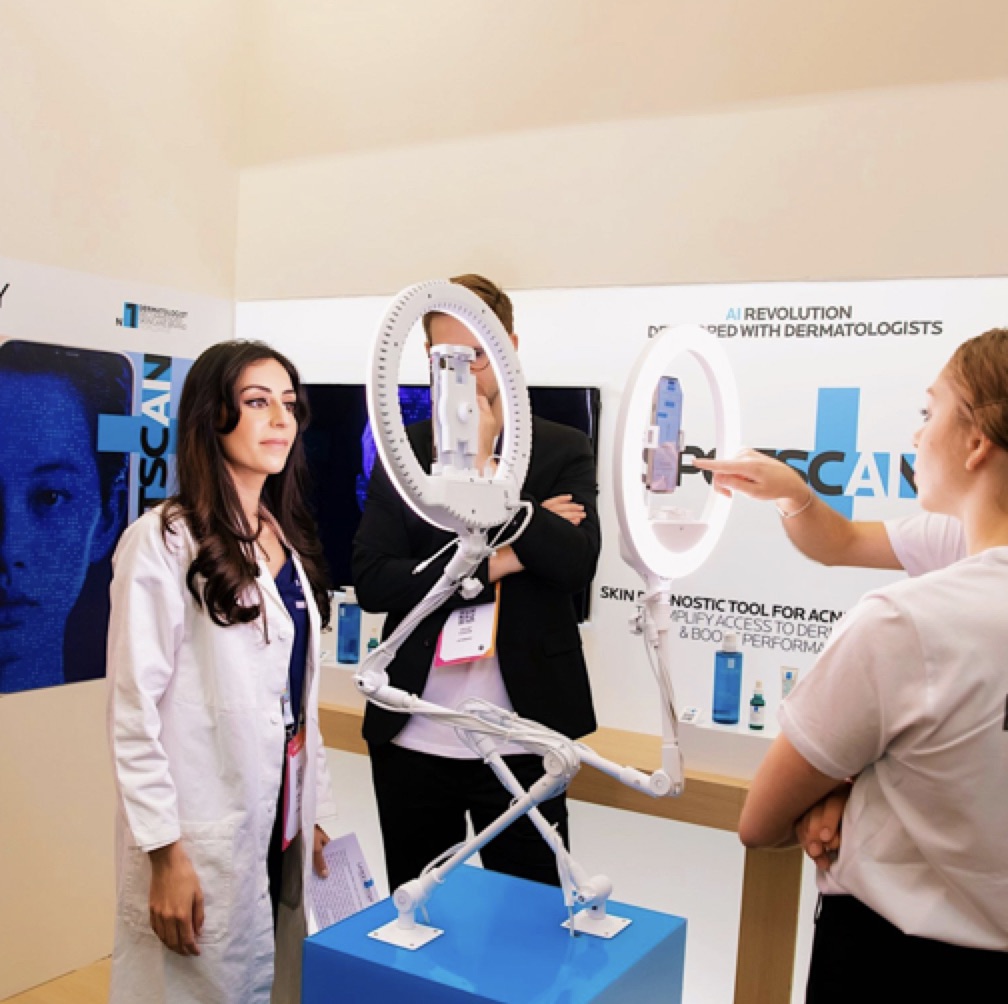
Commenting on the company’s presence at Viva Technology, L’Oréal Groupe CEO Nicolas Hieronimus said: “By putting our resources behind emerging technologies that democratise access to smarter and more sustainable beauty, we enable everyone to enjoy beauty more equitably and on their terms.”
L’Oréal Groupe Deputy Chief Executive Officer in charge of Research, Innovation, and Technology Barbara Lavernos added: “This level of innovation would not be possible without the growing complementary expertise of our Beauty Tech teams, as well as our open innovation programme via partnerships with some of the world’s most exciting start-ups and tech leaders. We are proud to share our presence at VivaTech with them.
“Technology and science enable us today not only to offer unmet services to our consumers, but also to transform ourselves from research to human resources to manufacturing or retail to invent the future of beauty.”
Click the YouTube video above to see highlights from L’Oréal Groupe CEO Nicolas Hieronimus’ keynote address at Viva Technology 2023
“Through Beauty Tech, we connect with billions of consumers around the world,” added L’Oréal Groupe Chief Digital & Marketing Officer Asmita Dubey. “ This allows us to understand their unique and evolving needs and augment people’s infinite diversity with an unrivalled degree of precision and personalisation, in the real and the virtual worlds.”
In 2022, L’Oréal Groupe’s growing beauty tech operations comprised over 5,900 employees, 800 online services and 40 million service sessions. In the same year, the company reached new milestones such as launching augmented beauty devices, hair and skin diagnosis tools and over one billion packaging unites embedded with a QR code to augment the consumer experience. Thanks to these efforts, L’Oréal Groupe won 6 CES innovation Awards in 2023.
Inclusive beauty
Lancôme debuted HAPTA, a new inclusive beauty tech solution that enables those with physical disabilities and limited mobility to apply makeup. It is the world’s first handheld, ultra-precise smart makeup device for the over 50 million people globally with limited fine motor skills, enabling them to apply lipstick independently.
The HAPTA device has built-in motion controls with a customised attachment that gives the user an improved range of motion. A magnetic attachment allows for easy ergonomic use and 360-degree rotation with 180-degree flexion to guide the lipstick application smoothly and precisely.

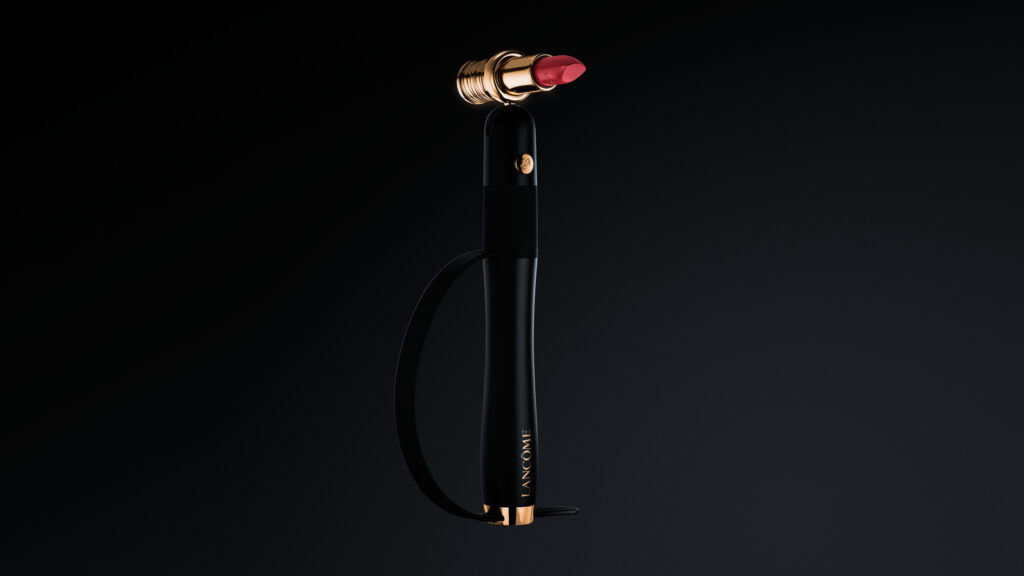
Maybelline for Microsoft Teams
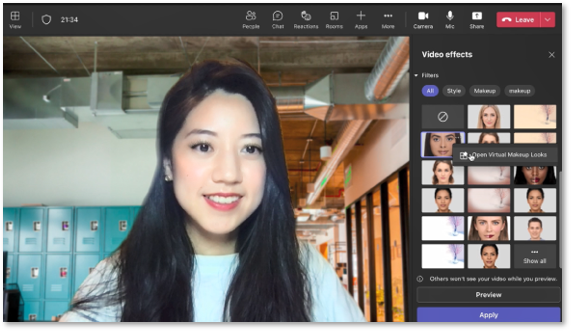
Maybelline New York has partnered with Microsoft Teams and the Geena Davis Institute to create the first-ever digital makeup bag. The innovation engages with 300 million active Microsoft Teams users and gives them digital makeovers leveraging L’Oréal’s Modiface Virtual Try-On technology. The digital makeup bag offers 12 different looks to embellish their on-screen appearances inspired by real Maybelline products for eyes, face and lips.
Shu Uemura NFC sticker and Shu:Brow
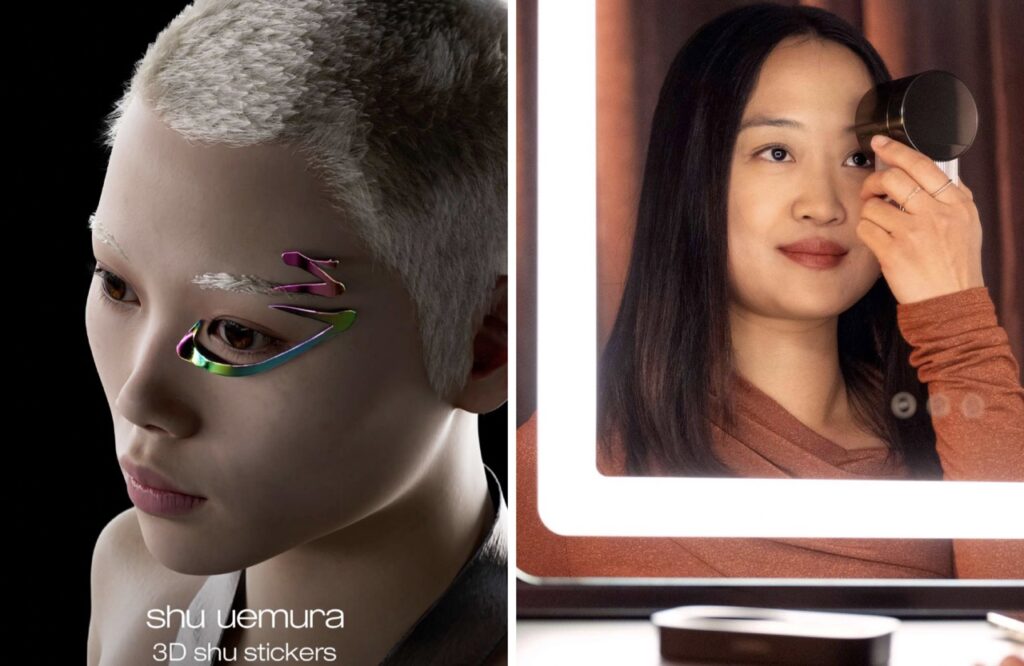
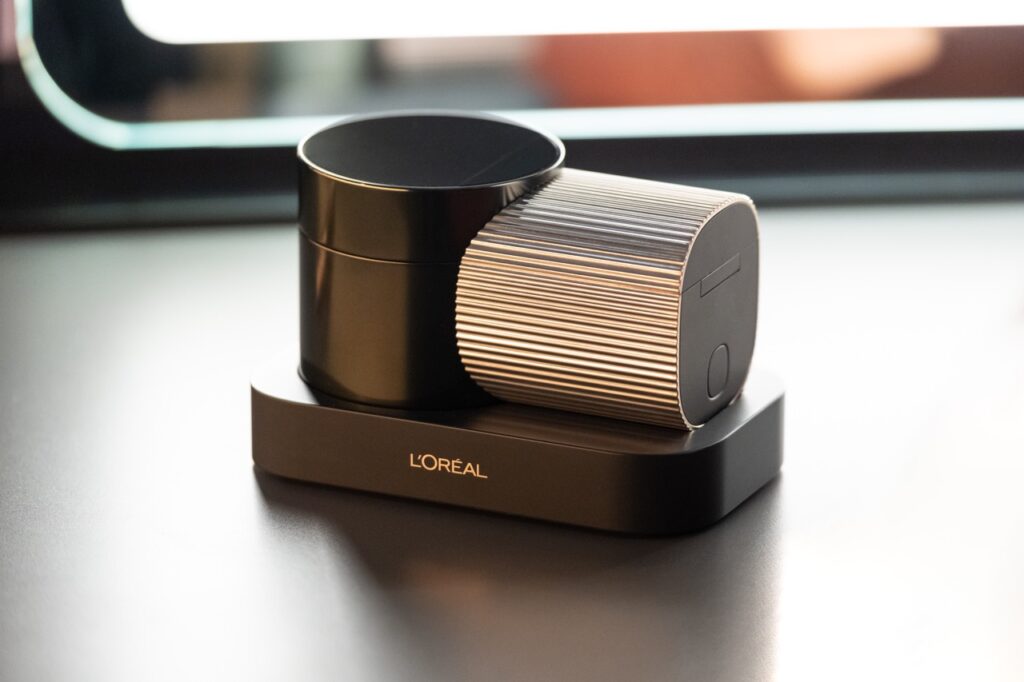
Japanese makeup artistry brand Shu Uemura has launched phygital stickers equipped with NFC technology. The stickers are inspired by Japanese calligraphy and work as wearable accessories.
Users can simply scan the stickers to unlock an augmented reality experience through AR lenses that enhance the user’s looks with virtual makeup looks inspired by Shu Uemura’s Japanese heritage.
The Shu:Brow is a smart, handheld applicator that enables consumers to achieve brow micro-blading and micro-shading effects based on their own natural facial features. It leverages L’Oréal’s ModiFace AR technology to scan the user’s face and make recommendations for micro-blading, micro-shading and filler effects.
The Shu:Brow uses 2,400 tiny nozzles and printing technology with up to 1,200 DPI resolution to deliver professional results at home in a matter of seconds. It was developed in partnership with Korean start-up Prinker which is an expert in non-permanent tattoo technology.
La Roche Posay Spotscan
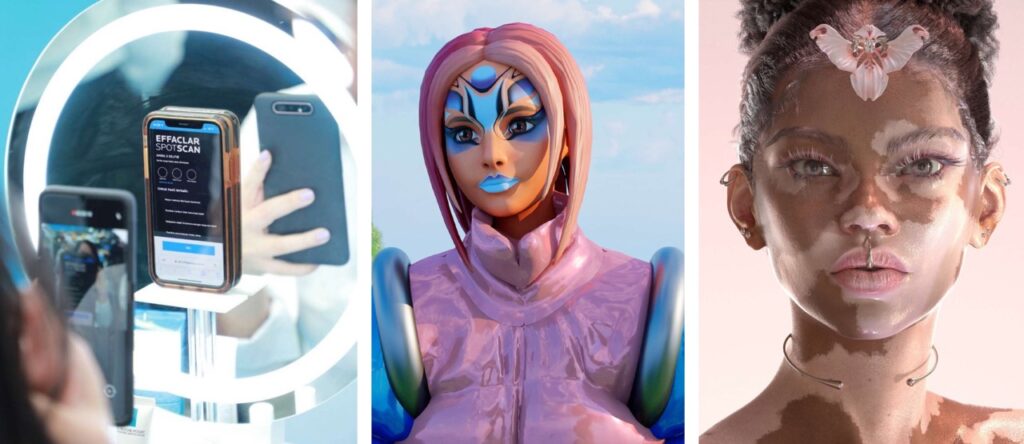
Sun care brand La Roche Posay launched Spotscan, a free diagnostic tool for acne sufferers available on the La Roche Posay website.
Users simply need to take three selfies which are then analysed using a bank of 50,000 photos across all ethnicities and skin types and based on a Global Acne Severity Scale.
The Spot Scan then recommends a bespoke La Roche Posay routine to battle acne. It is designed to target young adults by providing the vital first step in understanding their acne issues.
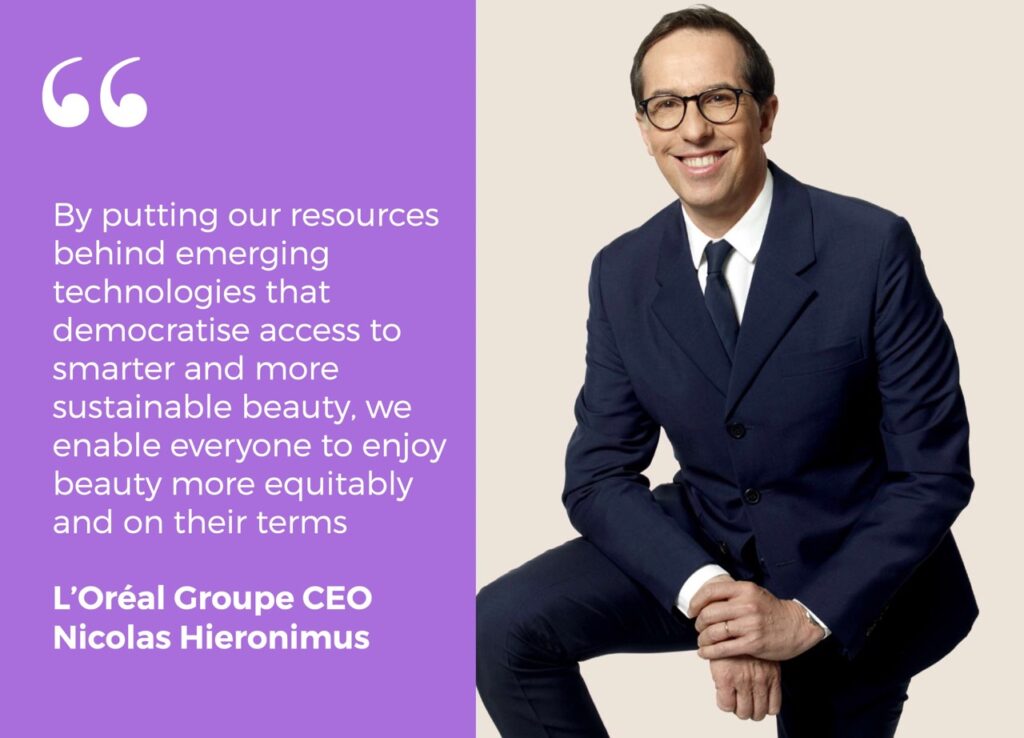
Avatar looks
L’Oréal Professionnel, Maybelline New York, Shu Uemura and Urban Decay have created virtual hair and makeup looks to enable the personalisation of avatars on popular gaming platforms such as Ready Player Me, Zepeto and Roblox. The vibrant looks enable gamers to express their individual styles while gaming. The project targets Gen Z consumers in the gaming, creator and community based platforms.
GORJS Dream Vortex Collection
Nyx Professional Makeup has launched the world’s first Decentralised Autonomous Organisation called GORJS.
GORJS is a record label for 3D creators and supports 3D artist communities from across the globe. Currently, GORJS has selected nine 3D artists to create the Dream Vortex NFT collection. The NFT line is minted on Opensea, the world’s largest peer to peer NFT marketplace. Each piece of art represents an artist’s interpretation of the theme ‘a new era of beauty’ and champion champion diversity, inclusion and creativity.
K-Scan

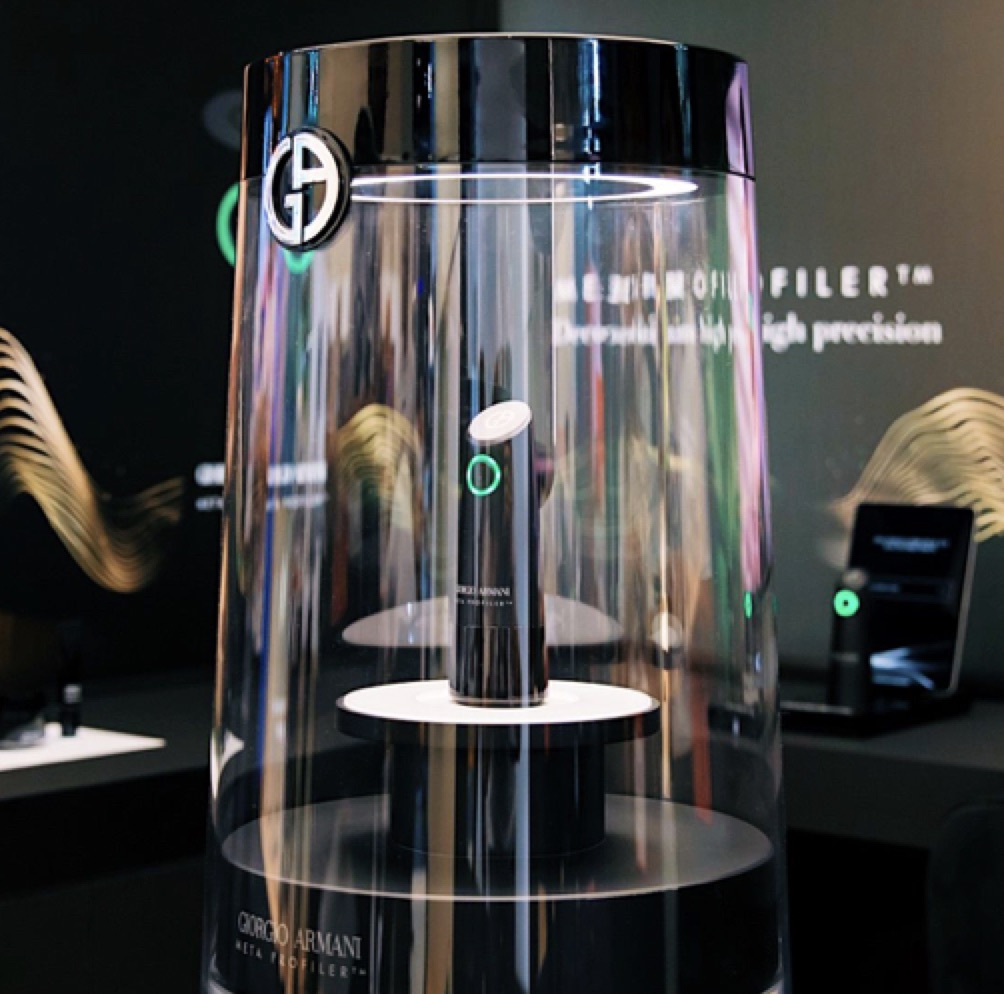
Kérastase introduced K-Scan, a handheld device that uses white, cross-polarised and UV light to analyse all types of hair and scalps. K-Scan empowers stylists to assess their client’s hair density, hair fibre diameter, dandruff and porphyrin levels, allowing them to make precise, ultra-personalised product recommendations.
K-Scan is tested across all hair and scalp types and offers higher resolution images than comparable technology. It was featured in a recent Moodie Davitt Spotlight Series eZine with Kérastase. K-Scan will be piloted in Spain and Australia in September with a global roll-out to follow in 2024.
Giorgio Armani Meta Profiler
The Meta Profiler device is an in-store, ten-minute diagnostic consultation that analyses consumers’ skin in high-precision. After the assessment, it delivers a tailormade Giorgio Armani Crema Nera skincare routine and Armani Beauty Meta Sculpt Boosting protocol.
The device analyses skin with ten times the magnification of the human eye and utilises 20 clinical studies to replicate precise lab measurements. It uses 18 analytical LED lights and three capture modes to assess wrinkles, skin texture, pigmentation, tone quality and smoothness.
The capture modes’ data combine with a real-time hydration sensors and an algorithm trained by using over 100,000 skin captures. This enables Meta Profiler’s high precision camera to measure more than 13 different clinical skin markers (such as wrinkles, dark spots and redness) which are then categorized into four skin criteria: structure, tone, balance and texture.
The assessment of these four criteria unveils the skin’s Vital Force Index, a measurement that charts the skin’s innate ability to revive itself. The Meta Profiler will roll out in China and France at the beginning of 2024.
L’Oréal Professionnel Water Saver
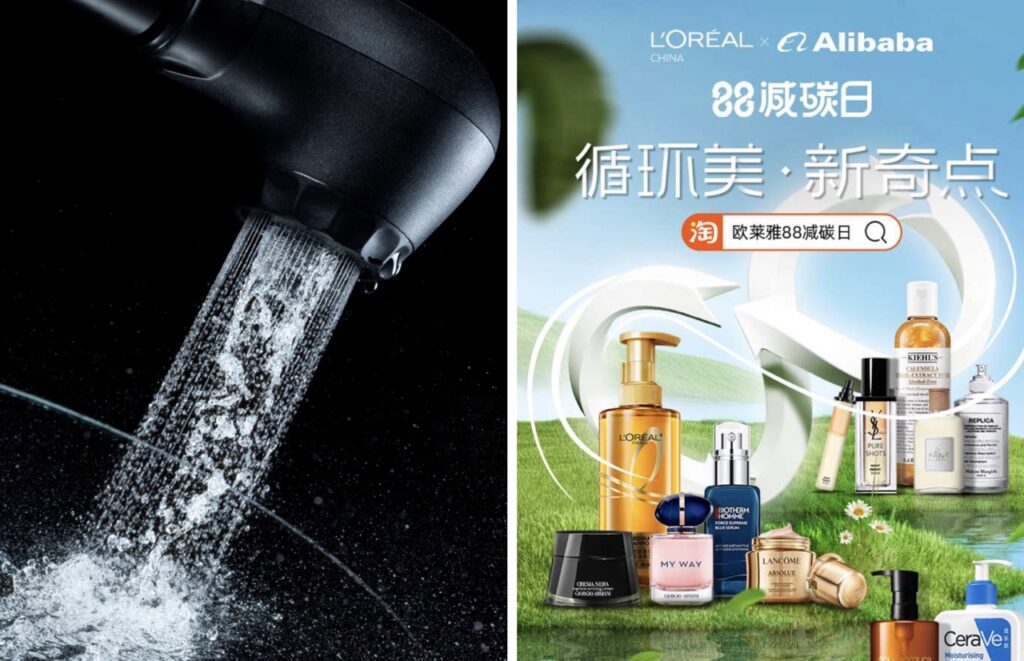
The L’Oréal Professionnel Water Saver showerhead uses water fragmented technology to save up to 69% of water in salons. The device — designed by Swiss sustainable tech company Gjosa — is linked to a live dashboard that accurately measures the accumulative amount of water saved by the technology. To date, it has saved over 42 million litres of water and is currently available in 3,100 salons globally.
L’Oréal x Alibaba
L’Oréal China and Alibaba have partnered to launch the first Digital Circular Economy Model in Beauty project, which was signed during French President Emmanuel Macron’s state visit to China in early April.
The three-year partnership promotes low carbon products, green logistics and consumer education combining the partners’ digital capabilities. The partnership seeks to empower consumers to make more sustainable choices based on clear and quantifiable product standards. It also encourages consumers to recycle product packaging through reverse-logistics solutions.
L’Oréal Paris Colorsonic

The L’Oréal Paris Colorsonic device is a lightweight, handheld device that empowers consumers to colour their hair at home. Co-designed by L’Oréal Technology Incubator, the Colorsonic features a ‘mess-free’ cartridge system that keeps the hair colour fresh until it is ready for use.
An oscillating nozzle brush, which moves 300x per minute, covers hair in colour quickly and evenly by delivering precise doses without dripping. The reusable Colorsonic device is made with post-consumer recycled plastic and comes with reusable gloves and a recyclable hair colour cartridge.
Impact+
As the world’s fourth-largest advertiser, L’Oréal is turning the lens onto its own marketing activities with its latest partnership with Impact+.
The partnership, which began in 2020, operates across 47 countries to track L’Oréal Groupe’s CO2 emissions across its digital media campaigns. Emissions are measured considering networks, services and devices, media channels, electricity consumption and country specific carbon intensity across social, video and programmatic and direct buying.
The partnership with Impact+ allows L’Oréal Groupe to calculate absolute reduction over time.
In 2022, L’Oréal Groupe and Impact+ measured 46 different campaigns and identified key leavers such that can be activated to minimise COS footprint and help streamline media planning activities. Guests at VivaTech were able to access an interactive tool to see these different levers at work and discover how L’Oréal is making its campaigns more sustainable. ✈







